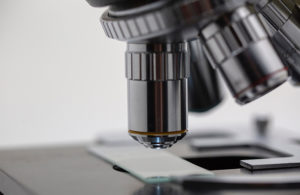
[Image from Unsplash>
Steve Yemm, BioData
Pharmaceutical companies operate within a highly regulated sector and are expected to deliver the highest standards of quality and safety throughout the drug development process by regulatory bodies such as the FDA in the U.S. or the NPL in the U.K.
Drug development is also extremely expensive, with one Journal of Health Economics study in May 2016 estimating the average “out of pocket cost” to a company developing just one new drug is $1,395 million. With the average time spent on R&D for one successful drug ranging from between seven to 11 years, labs cannot afford any delays caused by errors in the development process. Calibration of lab equipment has a key role in reducing lab errors leading to decreasing costs, increasing productivity and meeting regulatory standards in drug development by ensuring traceability and data integrity throughout the development process.
Calibration is one of the primary processes used to maintain instrument accuracy. It is crucial for generating reproducible results and maintaining data integrity, helping to mitigate the risk of errors. Using a calibration management system, preferably incorporated into an Electronic Lab Network (ELN), helps labs track and reproduce the calibration process. This can be especially useful for labs working in different geographical locations on the same project as it ensures the equipment being used is calibrated to the same specifications.
Calibration standards
Calibration is the comparison of measurement values delivered by a device under test with those of a calibration standard of known accuracy. The move towards international standardization is an essential part of developing greater cohesion between labs in different geographical locations.
Calibration primary standards are maintained by National Metrology Institutes (NMI) in each country (for example, NPL in the U.K., NIST in the U.S.) but today, due to a “Mutual Recognition Agreement,” it is easy to maintain calibration standards from any NMI regardless of the country of residence as long as the proper procedures are in place. In addition to these measures, labs must also receive official accreditation from the appropriate regulatory bodies to develop new drugs. Experts representing the national accreditation body carry out the assessments.
The accreditation body in the U.K. is the United Kingdom Accreditation Service (UKAS), and in the U.S. the body is the ANSI National Accreditation Board (ANAB). The assessors check that the laboratories are meeting essential conditions, such as technical competence, impartiality, valid calibration methods, traceability to national standards, reproducibility and effective quality systems. Effective calibration methods and processes are an essential component of running a lab effectively and safely.
Maintaining data integrity
In drug development, it is essential that experiments are traceable and reproducible. Not calibrating instruments properly can result in inaccurate or false results. Failure to comply with calibration standards in the U.S. could lead to failing an FDA audit, which is a significant setback for any drug development program and can damage the lab or drug company’s reputation. Labs should aim to meet the ALCOA+ principles, which state that all data should be attributable, legible, contemporaneous, original, accurate, complete, consistent, enduring and available. Using calibration management software can help maintain instruments in the high standard required by the FDA and other internationally recognized regulations by assuring data integrity ALCOA+ compliance.
There are many types of instruments in the lab, each requiring different maintenance and calibration schedules varying from several times a day or annually with some calibrations done in the lab and some off-site. It is imperative to manage equipment maintenance and calibration with proper documentation.
Using a calibration management system means all equipment maintenance can be properly scheduled around the lab’s work. The calibration process is then traceable so if errors occur in the drug development process they can be identified and fixed.
Operating a lab without a proper calibration process for the instruments can lead to several issues. Using uncalibrated equipment is likely to lead to increased downtime and unexpected failures as it can affect and damage other parts of equipment and lead to wastage. There is a risk that uncalibrated work equipment will be unsafe to use as there is no guarantee that appropriate steps have been taken to ensure instruments are working as designed.
An example of the negative impact of uncalibrated equipment is when it is used in temperature monitoring in the pharmaceutical storage unit. Incorrect temperatures could risk spoiling perishable items with the potential of putting consumers’ health at risk. In food production, this can lead to product spoiling and an increased risk of bacterial contamination.
Advantages of an integrated ELN and calibration management system
The most effective calibration management systems work in tandem with an ELN, with the best systems offering an all-in-one platform, including calibration and maintenance features. The best ELNs allow an overall view of the equipment status, along with additional booking and maintenance schedules.
An effective lab should consider the timeframe of calibration and testing in order to reduce the risk of project delays. However, the short-term delays of calibration are worth incorporating compared to delays caused by faulty equipment or inaccurate results. ELN’s offer an integrated solution to the different aspects of the calibration process, allowing labs to link equipment to experiments and protocols, making it easy to trace back from an instrument directly from the experiment page. They allow researchers to save time by viewing the equipment status directly from the experiment page.
By combining the data storage and processing power of an ELN with the associated calibration management features, labs can effectively manage their equipment and results in one place. By using an ELN to incorporate appropriate equipment calibration at the outset of the drug development process a lab can ensure fewer delays and greater accuracy of reporting test results, saving time and money whilst increasing the safety of workers and protecting the end-user.
As organizations move to increased standardization across geographies, having effective calibration management software in place will enable labs to abide by internationally recognized standards. These steps will ensure greater patient safety in the development of new drugs, creating more effective workflows and delivering new products to market with fewer delays.
Steve Yemm is CEO at BioData, a digital science company providing lab informatics products — including Electronic Lab Notebook, Lab Inventory, Chemical Registration and Biological Screening solutions — to biopharmaceutical and academic life sciences organizations in addition to other science-based industries.

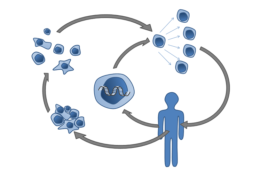
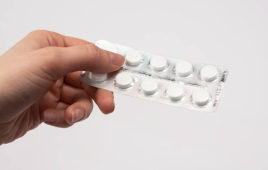
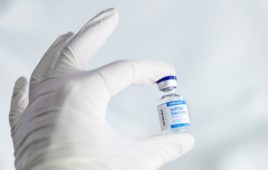
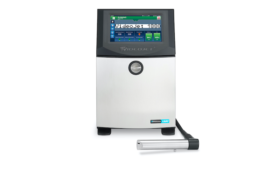
Tell Us What You Think!